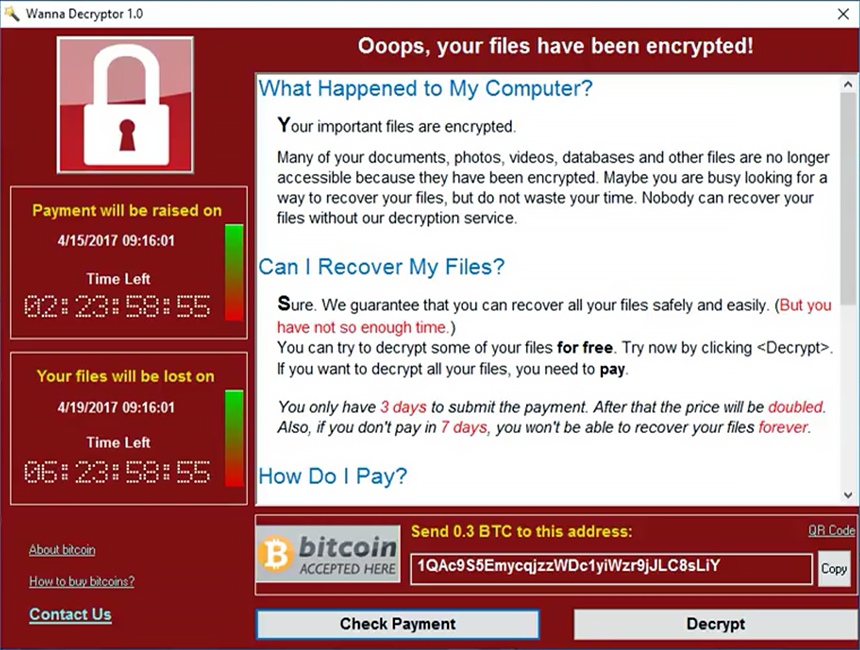On May 12, 2017 a new strain of the Ransom.CryptXXX (WannaCry) strain of ransomware began spreading widely impacting a large number of organizations, particularly in Europe. This virus specifically targets Microsoft Windows computers.
A hacking tool known as Eternal Blue, developed by US CIA has been enhanced by the hackers to super-charge an existing form of ransomware known as WannaCry, three senior cyber security analysts said.
Wcry is demanding a ransom of $300 to $600 in Bitcoin to be paid by May 15, or, in the event that deadline is missed, a higher fee by May 19. The messages left on the screen say files will remain encrypted. It’s not yet clear if there are flaws in the encryption scheme that might allow the victims to restore the files without paying the ransom.
If you have yet to install the Microsoft fix—MS17-010— you should do so immediately. You should also be extremely suspicious of all e-mails you receive, particularly those that ask the recipient to open attached documents or click on Web links.
If you are an existing client of ours on our Managed Services Platform, you would have already received the fix through your weekly patching cycle, If not please check with your IT and or Security provider to ensure you are covered
Read Reuters Article : http://www.reuters.com/article/us-britain-security-hospitals-idUSKBN18820S
UEFI Rootkits & Ugly Heads
Whether you are a cybersecurity expert or not, there are some security risks that every business leader needs to be aware of—and UEFI rootkits definitely fall into that category. These nasty computer viruses are uniquely dangerous to your computer systems because they...
The CFOs Guide To Evaluating Information Technology
Evaluating information technology can be a challenging aspect of the CFO role. Your organization is likely inundated with requests for new IT features, and understanding the true value of many of them requires technical knowledge you may not have. The spending...
Ransomware Hits Popular Cable TV Network
For several years now, sporadic attacks that interrupt major networks’ daily programming have been occurring around the world as hackers try to break in and succeed at their digital violence. In April 2019, the victim was The Weather Channel. The network found...



